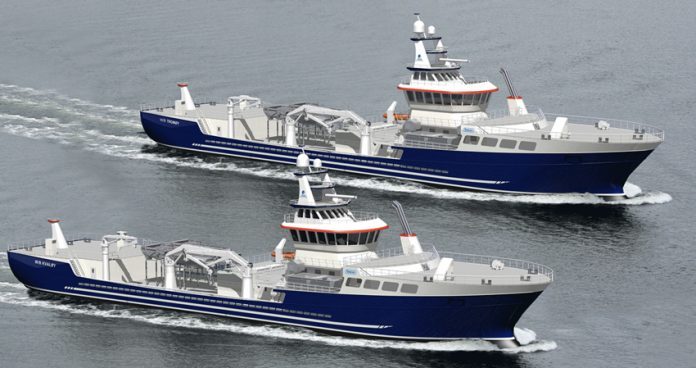Marine Harvest is hoping to start saving more of its fish without medicine in 2018, as it ratchets up its sea-lice fighting ability with the arrival of two new de-licing systems at its BC fish farms.
The company is hoping a Hydrolicer being put into use in April and the arrival of a freshwater treatment vessel from Norway will offer more tools for its fish-health staff in the battle against pervasive sea lice. Both machines are new to the market and completely new in Canada, which has seen its fair share of sub-arctic lice.
Used in Europe, the Hydrolicer uses water pressure to gently pry lice off of salmon before recapturing the pests for destruction.
“We won’t accept anything less than a quick and safe process,” Gerry Burry, Marine Harvest Canada’s R&D lead for the Hydrolicer project was quoted as saying in a company publication.
Treatment vessel
This first use of the Hydrolicer in April is to be followed in the third-quarter of 2018 by the late arrival of the brand-new, 75-meter vessel from DESS Aquaculture Shipping, a joint venture of Marine Harvest and Deep Sea Supply. It’ll bathe salmon free of lice and provide compartmentalized hydrogen-peroxide treatments for gill repairs and sea-lice removal.
Trond Erling Andersen of DESS confirmed for SalmonBusiness that the new treatment boat is due to arrive in the Vancouver area in late-September or early October. The new-build, Aqua Tromoy, will be re-flagged to Canada’s registry and renamed, Blue Revolution.
Andersen said the ship will have a simpler version of a dynamic positioning system onboard, and it’ll be crewed mostly from Marine Harvest’s existing staff. Transport Canada will decide exactly how many crew, although the vessel is designed to have 10 onboard.
Lice under-control
The USD 27-million vessel is expected to help cut down on lice numbers, although just one of Marine Harvest’s farms fifty farms in BC, at Hardwicke Island, showed overly high lice counts on fish. It was made fallow in December 2017.
In the warmer month of July 2017, all of Marine Harvest’s BC farms showed lice levels of less-than-three per fish — favourable numbers on both sides of the Atlantic.
“This fish health strategy also helps to meet standards set by the Aquaculture Stewardship Council, a certification system that Marine Harvest has committed to achieve at all regions by 2020,” company literature said, although it was the first to achieve ASC salmon certification in North America in 2015.
“Simply put, this (freshwater treatment vessel) is a game changer for our business,” Vincent Erenst, Marine Harvest Canada’s managing director, is quoted as saying.
“This vessel allows us to provide freshwater therapy regularly to all our salmon.”

